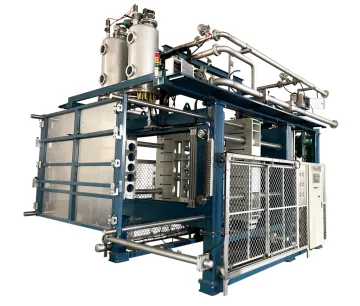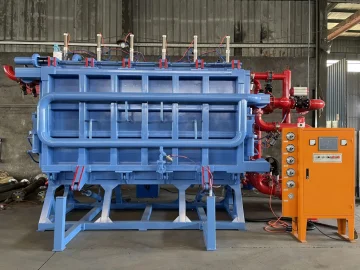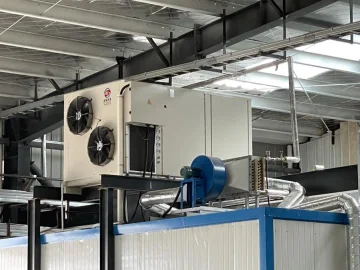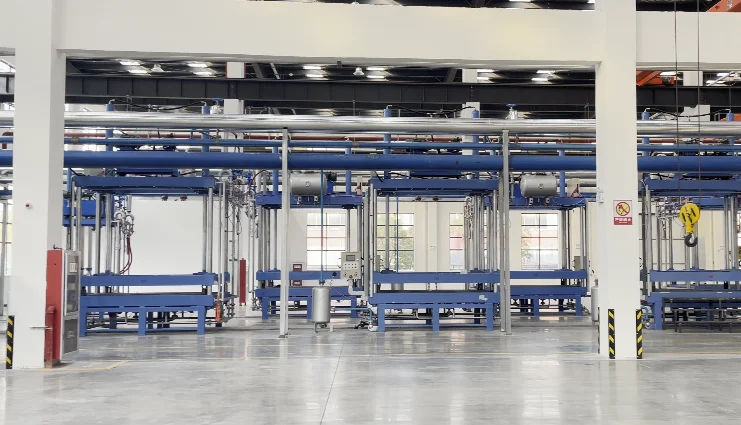Electric motors permeate the modern world, powering household appliances to industrial equipment. The housings that cover such motors are vital components, and their production process directly affects motor performance and life. Lost Foam Casting Process has been a very effective process to produce complex motor housings with better surface finish and precision.
What is Lost Foam Casting?
Lost foam casting or evaporative pattern casting is an investment casting technique in which a sand-coated polystyrene foam pattern is used to create the mold. Molten metal is cast into the mold, which will burn up the foam pattern and exactly replicate the desired shape.
Advantages of Lost Foam Casting for Electric Motor Housings
As compared to traditional casting methods like sand casting,Lost Foam Casting has some advantages in manufacturing electric motor housing:
Complex Geometries:Lost Foam Casting can manufacture complex geometry and design with good detail, for example, thin walls and complex internal passages, which are favorable for motor housings with cooling fins and complicated structures.
Dimensional Accuracy: The process offers good dimensional accuracy and reproducibility with less need for large-scale machining and with consistent part quality.
Smooth Surface Finish:Lost Foam Casting gives castings a smooth surface finish, minimizing the need for secondary finishing processes and improving the overall appearance of the motor housing.
Cost-Effectiveness: Through cost savings on machining and material loss,Lost Foam Casting can be an economically sound choice for mass production of motor housings. According to one source, through the use ofLost Foam Casting, the cost per ton of the casting can be reduced by 1400 yuan compared to the furan resin sand process.
The Lost Foam Casting Process: A Step-by-Step Guide
Some key steps constitute theLost Foam Casting process of electric motor housings:
1.Pattern Creation
Mold Design: For medium and large motor housing with heat-dissipation fins, the mold is usually separated into 4 parts, then assembled together after white film formation. It is difficult to control the size of the assembled final white mold, poor stability.
Foam Pattern Molding: A foam pattern of the same shape as that of the desired motor housing is prepared initially. It is generally done by pouring expandable polystyrene (EPS) beads into a mold.
Pre-Foaming and Molding: The correct size of EPS raw beads must be used based on the 5mm thickness of motor housing fins. The pre-foam density needs to be controlled at 25-26g/L. Electric heating has to be used in pre-foaming to achieve uniform bead size and low moisture level. Foam molding is performed on a custom motor housing hydraulic semi-automatic molding machine. Automatic feeding is performed first, after which the rest of the operation is automatically executed by the equipment control system that is capable of sustaining consistency in the quality of the white mold.
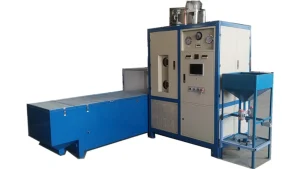
2.Assembly:
Drying: Dry the foam patterns to evaporate the water. Control drying temperature of white mold at 40-45℃ for 48h. The model cannot be sent directly to the drying room once it is removed from it, and should be placed on the storage rack in the forming area until the surface water has evaporated considerably and inspected before being placed in the drying room.
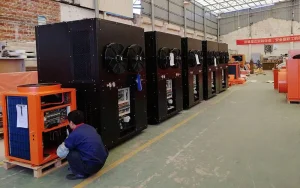
Combination: The foam patterns are bonded together to achieve the final mold after drying. The foam mold is dried and weighed separately, and the ones not in the required range are sorted out. The heat sink fins are inspected separately, and the ones that fail in appearance must be repaired or sorted out. Flaws ranging from 10mm×10mm are usually repaired with special white mold repair paste. One-piece casting is done once, with the non-drive end up.
3.Coating:
Application: The constructed foam pattern is covered with a refractory coating, known as a Lost Foam Casting Process, which acts as a barrier between the molten metal and the foam.
4.Molding:
Sand Filling: The coated pattern is placed in a casting flask and surrounded by loose, unbonded sand. The sand supports the pattern while pouring.
5.Pouring:
Metal Pouring: The molten metal is poured into the mold, which at the same time vaporizes the foam pattern and fills the cavity. The metal composition of the motor housing must be: w(C) 3.15%~3.25%, w(Si) 1.6%~1.8%, w(Mn) 0.7%~0.9%, w(P)≤0.05%, w(S)≤0.1%. The initial molten iron must be maintained at 1580~1590℃.
Vacuum: Under vacuum, normal pouring should be conducted for improved flowing of the metal and reducing the defects. Pouring temperature must be maintained 1490-1500℃ and pouring vacuum must be regulated to -0.065~-0.07MPa.
Solidification: Pour time is regulated around 50s, and pressure is shut off 10min after pouring, and opening time is regulated at 4h. Metallographic microstructure of the cast is grade 2 length of graphite, volume percentage of pearlite is >95%, tensile strength is 240MPa, and hardness is 190HB.
6.Shakeout and Finishing
Extraction: The sand is blown away after the metal solidifies and the casting is removed.
Finishing: The aforementioned finishing operations like trimming, cleaning, and machining to finishing standards are done on the casting. The stress-relieving needs to be performed and the hardness is 180~230HB.
Critical Process Parameters in Lost Foam Casting
Achieving high-quality motor housings byLost Foam Casting requires tight control of certain process parameters:
- Foam Pattern Density: The foam pattern density affects the surface finish and dimensional accuracy of the casting.
- Coating Properties:The coating must have adequate permeability, heat stability, and metal penetration resistance to prevent defects. The coating must have good hanging and crack properties at room temperature. It must also have crack resistance at high temperatures. The coating must have high stripping performance.
- Pouring Temperature: The temperature of the molten metal must be optimized to fill up the mold fully and prevent misruns or cold shuts.
- Rate of Pouring: The rate of pouring of the molten metal controls mold filling and defect creation.
- Vacuum Level: Vacuum treatment during pouring eliminates gases and increases metal flow, resulting in a better casting.
- Rate of Shrinkage:Global forming with different rates of shrinkage in the radial and height directions is of great importance. The rate of shrinkage should be 1.35% in length and 1.15% in height.
- Gating system:A stepped gating system has to be used. The position of the internal sprue is critical, and a multi-point iron inlet has to be used.
Hangzhou Ouchen Technology Co., LTD: Your Partner in Lost Foam Casting Equipment
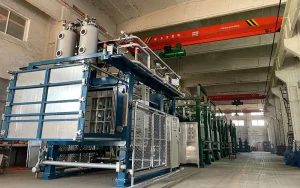
Hangzhou Ouchen Technology Co., LTD is a leading firm in the manufacture of high-quality intelligent lost foam casting white and yellow area machinery. They specialize in the manufacture of lost foam casting machinery for the EPS/EPP industry and have German technology with independent intellectual property patents.
Hangzhou Ouchen Technology Co., LTD manufactures different machinery that is related to the lost foam casting process. These are pre-foaming machines with automatic and PLC computer control, remote control function foam molding machines and energy-saving technology, and air dryers with energy-saving foam bead drying. In terms of high efficiency, quality, and low energy, Hangzhou Ouchen Technology Co., LTD has the dedication to providing innovative solutions for the lost foam casting market.

